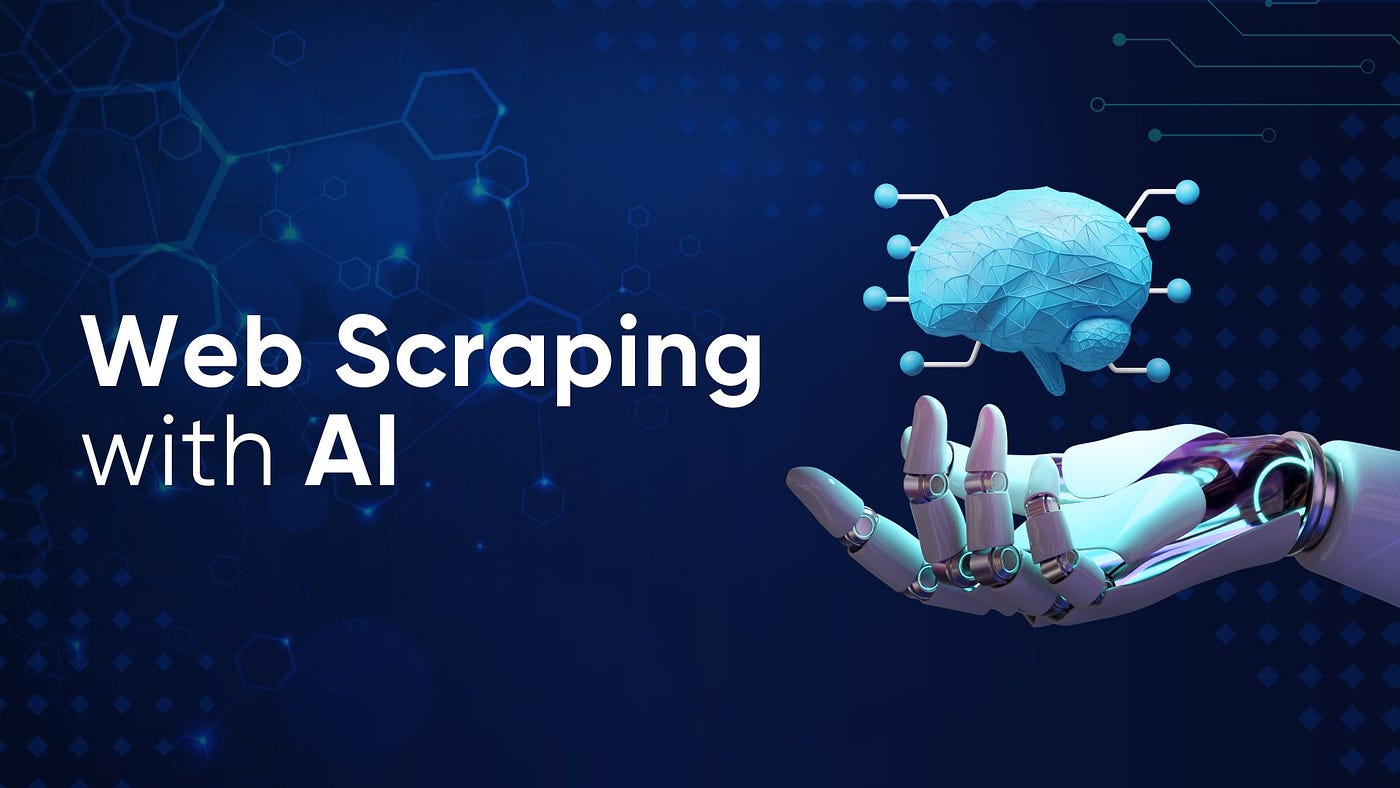
In the era of big data, businesses and researchers are constantly seeking innovative ways to collect, analyze, and leverage data for strategic decision-making. Data mining has been a cornerstone of this effort, enabling organizations to extract valuable insights from large datasets. However, as the web grows more complex, data mining techniques alone are no longer sufficient. Enter AI-powered web scraping—a more advanced method that automates and enhances data collection from the web. This step-by-step guide will take you through the process of moving from AI Powered Web Scraping traditional data mining to AI-powered web scraping, exploring how AI can make your data extraction efforts more efficient, scalable, and accurate.
Step 1: Understanding Data Mining and Web Scraping Basics
To begin the transition from data mining to AI-powered web scraping, it’s important to understand the basics of both fields. Data mining involves analyzing large datasets to uncover patterns, trends, and relationships that can inform business decisions. Traditionally, data mining focuses on structured data stored in databases, such as sales figures or customer demographics. In contrast, web scraping involves extracting data from websites, which can be structured (like tables or lists) or unstructured (such as text, images, or multimedia). Web scraping typically requires manual coding and parsing techniques to extract data from static websites. While data mining and web scraping share the goal of gathering insights from data, AI introduces an advanced layer of automation and intelligence, making data extraction faster and more adaptable.
Step 2: Automating Data Collection with Web Scraping Tools
The first step in moving from data mining to AI-powered web scraping is adopting scraping tools that automate data collection. Traditional web scraping often involves writing custom scripts to crawl websites and parse HTML pages. While this approach can work for simple websites, it becomes cumbersome when dealing with dynamic content, JavaScript rendering, or sites that employ anti-scraping techniques. AI-powered scraping tools, on the other hand, use machine learning (ML) algorithms and natural language processing (NLP) to understand and interact with dynamic websites. These tools can automatically adjust to changes in website structure, ensuring that data is consistently and efficiently extracted without the need for manual coding updates. By integrating AI into the scraping process, businesses can significantly reduce the time and effort spent on setting up and maintaining scraping solutions.
Step 3: Enhancing Data Accuracy and Quality with AI
One of the primary benefits of AI-powered web scraping is the ability to enhance the accuracy and quality of the extracted data. Traditional scraping tools often require significant post-processing to clean, filter, and structure the data, especially when dealing with unstructured or noisy data. AI-driven web scraping systems, however, can categorize and structure data in real time as it’s being scraped. Using NLP and ML, AI can understand the context of the data, recognize relevant information, and eliminate irrelevant or duplicate content. For example, in e-commerce, an AI-powered scraper can automatically identify product prices, names, and descriptions from various websites, ensuring that the collected data is accurate and organized. This level of automation reduces the need for manual intervention, saving time and ensuring that businesses work with high-quality, usable data.
Step 4: Scaling Data Collection Across Multiple Websites
Scaling data collection across multiple websites is another area where AI-powered web scraping excels. Traditional data mining and scraping methods may require individual scripts for each website, especially when the websites have different structures or data formats. AI-based scraping tools eliminate this need by automatically adapting to different websites and formats, enabling businesses to collect data from a wide variety of sources. Additionally, these AI tools can scrape data in real-time, ensuring that businesses have access to up-to-date information without delays. Whether you’re tracking competitor pricing, monitoring social media mentions, or gathering financial data, AI-powered web scraping can handle vast amounts of data across diverse websites, all while maintaining speed and accuracy. This scalability makes AI-driven scraping ideal for businesses with large-scale data needs or those operating in fast-paced industries.
Step 5: Overcoming Anti-Scraping Barriers with AI
One of the biggest challenges in traditional web scraping is overcoming anti-scraping measures implemented by websites. Many websites employ techniques such as CAPTCHAs, IP blocking, and rate-limiting to prevent bots from scraping their content. AI-driven scraping tools are designed to overcome these barriers by mimicking human-like browsing behavior. They can rotate IP addresses, use headless browsers, and simulate real user interactions, making it harder for websites to detect and block automated scraping efforts. This advanced capability ensures that businesses can continue to gather data from a broader range of websites, including those with robust anti-scraping defenses. With AI’s ability to bypass these barriers, businesses can collect real-time data from even the most protected sites, giving them a competitive advantage in industries like e-commerce, finance, and digital marketing.
Conclusion: Embracing AI-Powered Web Scraping for the Future
The transition from data mining to AI-powered web scraping marks a significant advancement in data collection technology. By leveraging AI, businesses and developers can automate and scale their data extraction efforts, ensuring faster, more accurate, and cleaner data. The ability to handle dynamic content, improve data quality, scale across multiple sources, and bypass anti-scraping measures makes AI-driven web scraping an invaluable tool for modern organizations. As AI technology continues to evolve, so too will the capabilities of web scraping, allowing businesses to unlock new insights and stay ahead in the increasingly data-driven digital economy. Embracing AI-powered web scraping will not only streamline data collection but also provide organizations with the intelligence they need to make better, more informed decisions.